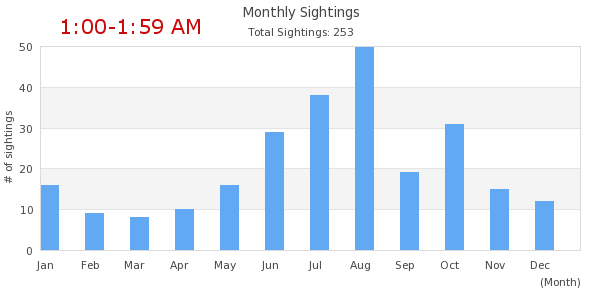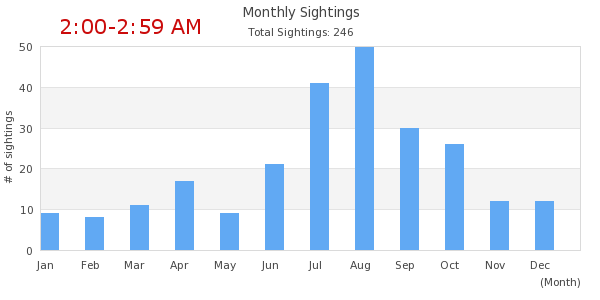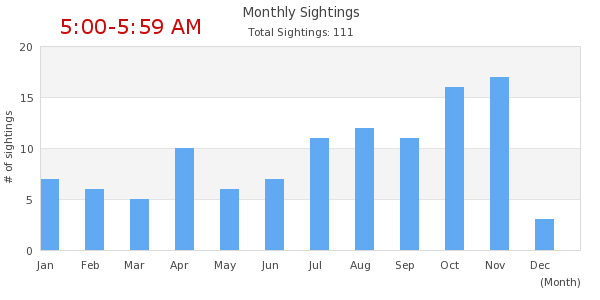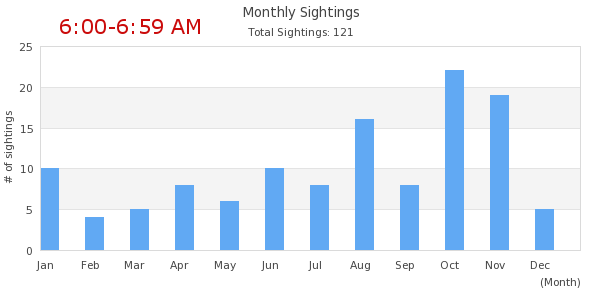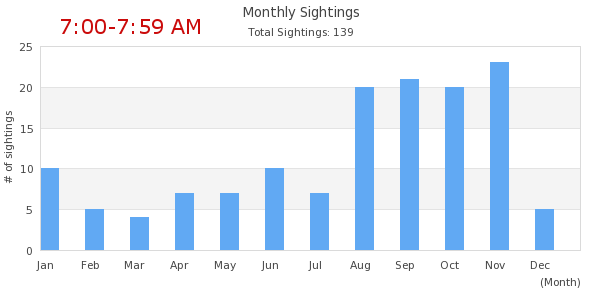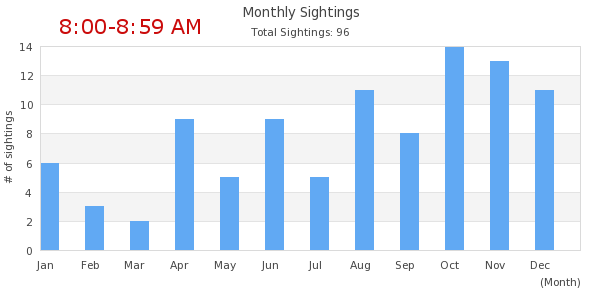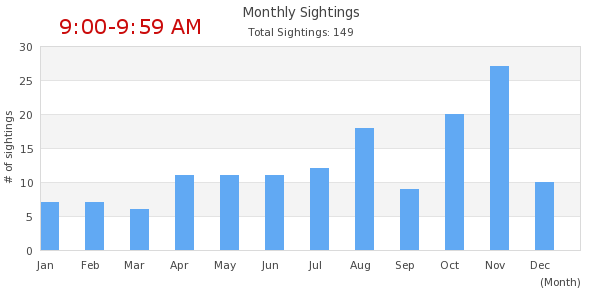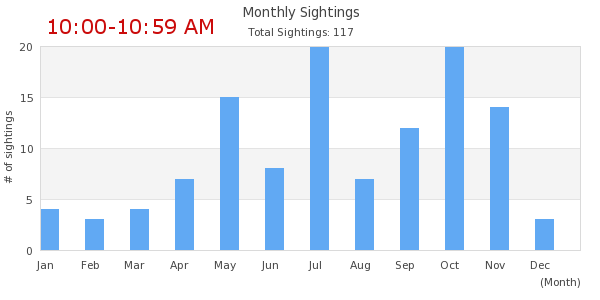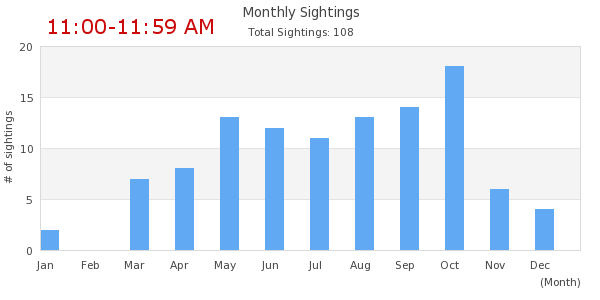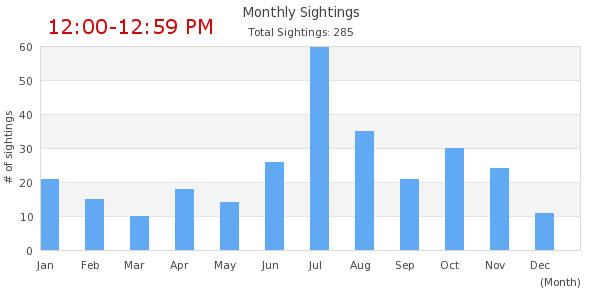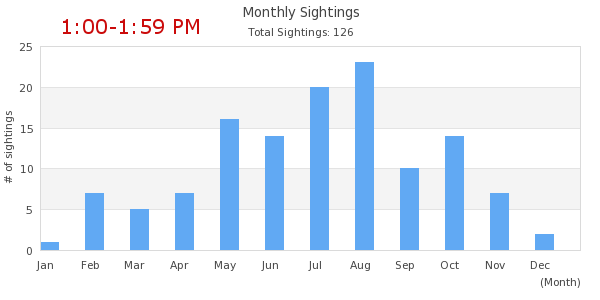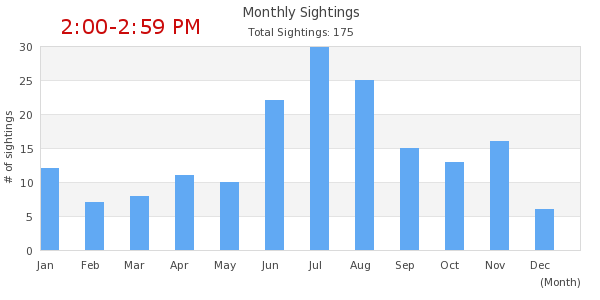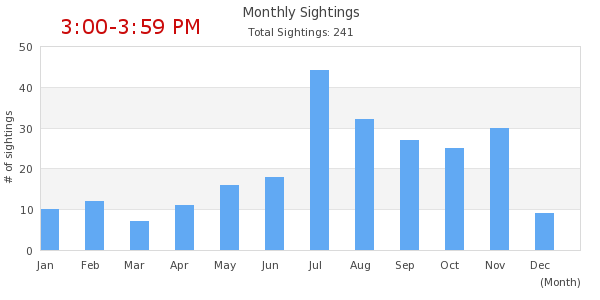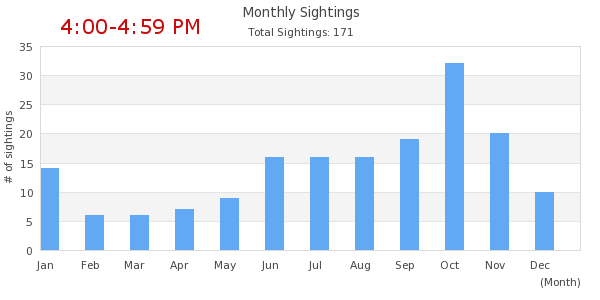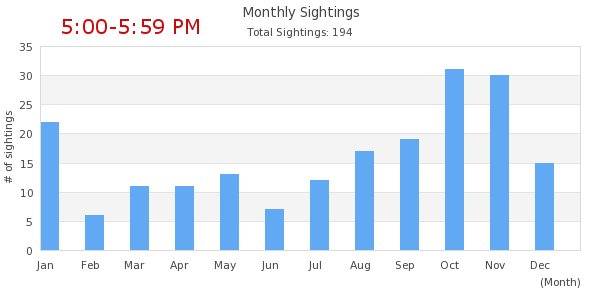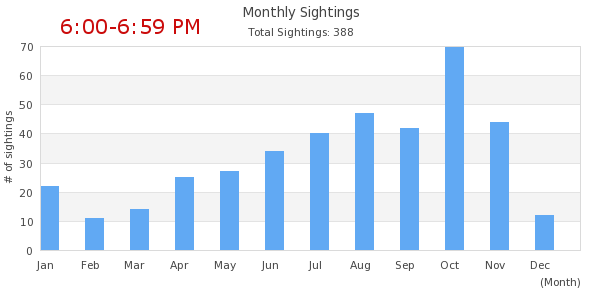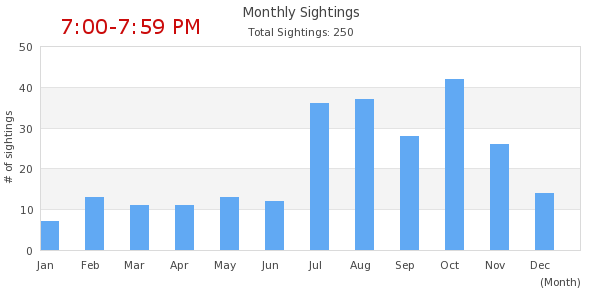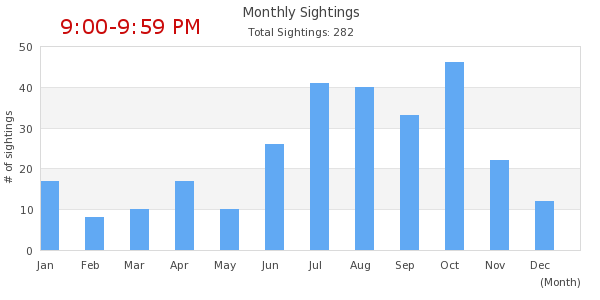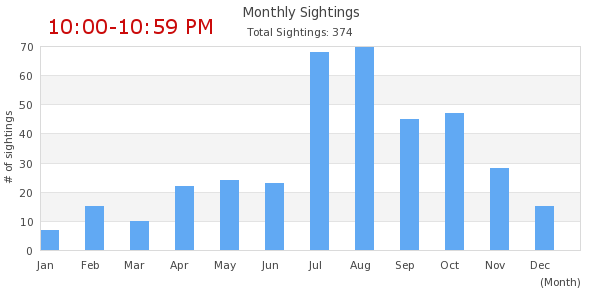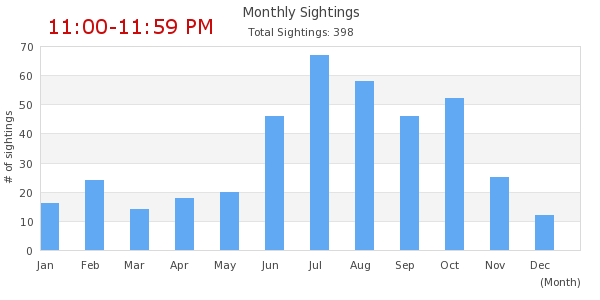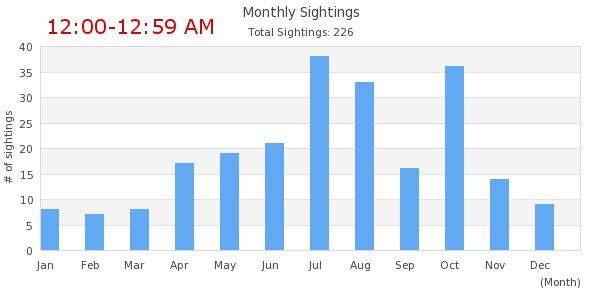Leaderboard
Popular Content
Showing content with the highest reputation on 08/04/2018 in all areas
-
Redbone. I added a time of day chart to the SSR to make this easier. It doesn't plot 6pm (18:00) because it is the default (as you noted). All charts below are for CA, OR and WA. All Year Spring Summer Fall Winter We have the data. There are 6500+ manually curated reports in the SSR database. (see above)2 points
-
There is a visibility index to factor in as well for the winter months as foliage is sparce so Humans as well as BF's can see farther into habitat that would normally be obstructed when leafed out.1 point
-
The charts would have to be modified to only include sightings with infants. Then we would have to have an approximation of growth rates, which we would have to infer is similar to humans or perhaps great apes...neither of which would necessarily be accurate. Without dusting off my statistics of biological systems text, I’d say; Vast increase of sightings in spring through fall. Most humans are out recreating in bf habitat = more opportunities of an encounter by any specific individual? Or does it? If we can separate drivers from those that are camping (or headed to camp/hike) that will likely give a more consistent number of sightings by season...but that doesn’t matter too much since the ratio of sightings by season and time seem to be similar. If there is a difference then we can infer that bf is sensitive to cold if they are not as active in winter months based solely on sightings...but even that would be skewed if we assume humans do not venture as deep into their habitat in the winter months. Conversely, far less humans tend to be awake and alert at night. The high number of sightings at night therefore again confirms a tendency towards a nocturnal bf as it is less likely a human will be awake/alert or have sufficient sensory capabilities to detect one at night. The charts can can tell us just what they do. Likely mostly nocturnal. We can use what we have, which is knowledge of human behavior to confirm that. What would require more data for analysis but would be useful? 1. Situation/circumstance. If day sightings were a result of humans disturbing snoozing bf and bf investigates human activity disturbing them or simply tries to avoid humans and is observed. 2. The approximate decline of # of humans in bf habitat during winter months vs # of bf sightings during day/night in winter months. Would it suggest bf is more active during the day in colder months? 3. Is bf less “on guard” in winter months due to the decline in human presence making chance sightings more likely and their diligence diminished to some degree? Data on those factors COULD (but not necessarily) suggest that statistically a person could have a higher likelihood of seeing bf during the day during winter months than between 8p and 2a in summer months.1 point
-
When you go into the woods look for Jewelweed and use it as a prophylactic to help you from getting poison ivy in the first place. You'd mascerate the leaves in your hand then spread it on your arms hands, face and other exposed areas. It's easy to spot and grows in the same areas you'll find poison ivy. https://altnature.com/jewelweed.htm https://www.bing.com/images/search?q=jewelweed&FORM=HDRSC21 point
-
The active area of my first encounters and first footprint find was near a heavily used human forest trail. It had been there for a very long time and I got the impression BF had too. There was something in the area that kept them around. I found reports going back many decades. Those reports got me looking there in the first place. So rather than raise a fuss they seemed to accept human presence in that area. Lacking were signs of their presence like break off trees, tepee structures etc that are often mentioned in other areas. Had they done any of that they would simply have alerted humans of their presence. While i did fairly often find footprints, it was obvious to me that they took great pains to avoid leaving themt. Only making them when they had no choice because of conditions. Further away from human active areas I found stumps with rock stacks that seemed to define trails. Most often three rocks, usually stacked, but sometimes just on the stump, as if they had been stacked at one point and blown down. The number three seemed to be significant somehow. The trails were faint but visible during the day time but perhaps the rock stacks on stumps allowed the trail to be followed in faint moon or star light. In some cases these faint trails paralleled nearby human trails. So it was not for easy going but going in the same direction of the human trails without using them. Having the advantage of use of an airplane has allowed me to scout over areas well away from any roads, logging or otherwise in Skamania County WA. I often see trails, that are not found on maps. Some may be very old logging roads mostly grown over but some are through rugged terrain that would indicate grades loaded logging trucks would not be capable of traversing. I suspect in truely remote areas, there may literally be trails that only BF use. They certainly seem unknown to man because I cannot find them on detailed USGS or State maps. . Perhaps originally used by NA, these trails fell into disuse when the NA lost their need to be in the woods, and BF started using them, in way reclaiming the woods for themselves. .1 point
This leaderboard is set to New York/GMT-05:00










.jpg.22317ae0836e3f3a2b993c7c523787d9.thumb.jpg.51223db83d4cd68123b9c0ccc5531ed0.jpg)



